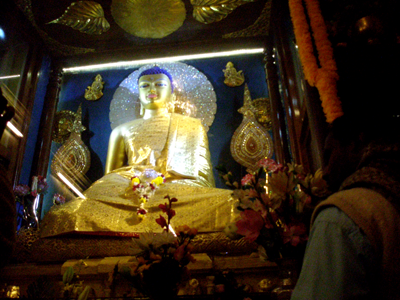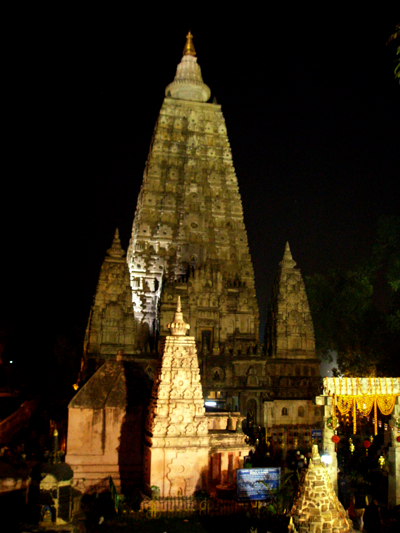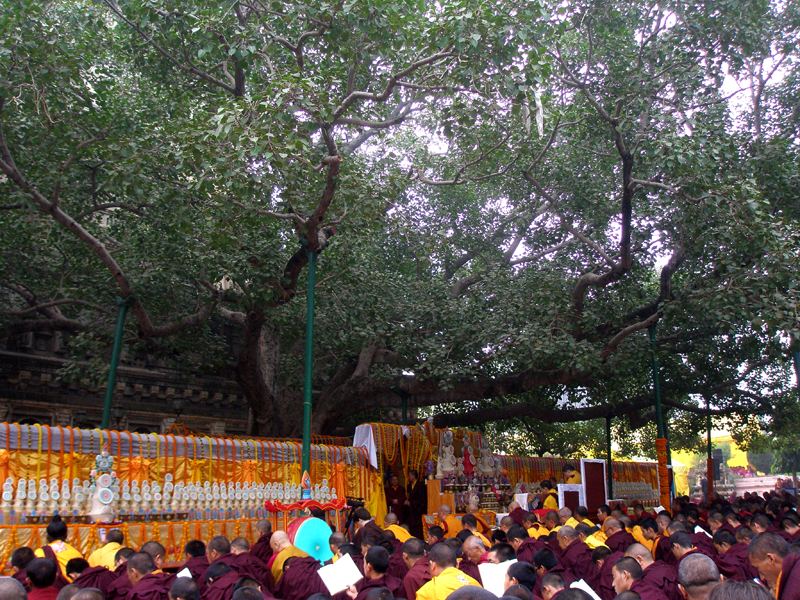Buddhist festival Kagyu Monlam Chenmo
 | |
In one of the sutras it is said that Buddha Shakyamuni told his disciples - in future the Buddhists who have not met him, should gather in one of the four great places of pilgrimage - in Lumbini (the birthplace of Buddha), in Bodhgaya (place where Buddha attained enlightenment), Sarnath (where Buddha first turned the Wheel of Dharma) and Kushinagar (where he passed into Paranirvana). Among all these places Bodhgaya stands out. It is believed that here all Buddhas of the past attained enlightenment and all future Buddhas will attain enlightenment.
 | |
Kagyu Monlam Chenmo takes place under the Bodhi tree, where the historical Buddha Shakyamuni attained enlightenment more than 2,500 years ago. The festival attracts many prominent teachers of the Kagyu School, Rinpoches, Lamas, monks and nuns, students from different countries of Europe, America and Asia also join them. It is a beautiful and colorful event that brings together people from different corners of the world. Two people preside at Kagyu Monlam Chenmo - XVII Karmapa Trinley Thaye Dorje and XIV Kunzig Shamar Rinpoche, the spiritual heads of the Karma Kagyu tradition of Tibetan Buddhism.
Monlam Chenmo (or the Great Prayer Festival) historically originated in Lhasa in Tibet. This holiday was established by Tsong Khapa, the founder of the Geluk tradition (one of the four major schools of Tibetan Buddhism). In Tibetan "Monlam" means "a strong aspirations/ good wishes prayer", "Chenmo" - "great." The worthiest aspiration is the aspiration based on bodhicitta - the wish to achieve enlightenment for the benefit of all sentient beings and help them to achieve enlightenment. In the csutras it is said that anyone who makes such aspiration accumulates great merit, especially if it occurs near the stupa with Buddha's relics. In this case, any aspiration will be answered.
During the week the participants gathered at 7 o'clock in the morning to start recitation of prayers that lasted till 17.00 with short breaks for lunch and tea. During the day pilgrims made various offerings in the main stupa of the Mahabodhi temple (flowers, fruits, khadaks - ritual scarves), made koras (clockwise ritual circumambulations) of the Mahabodhi complex, did prostrations or practiced Mandala offering (in order to become generous one offers to Buddhas the best and most precious one has).
The great Buddhist Master Nagarjuna said, "If you make aspiration prayers together with highly realized Bodhisattvas (highly spiritual beings), the results will be so powerful that it is possible to avert famine, natural disasters, to get rid of any bad karma."
That is why every year the representatives of different Buddhist schools come together to do the aspiration prayers in different holy places of India.
